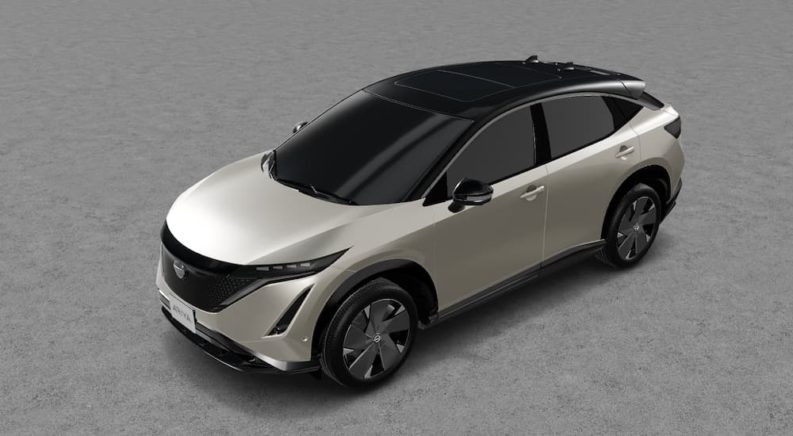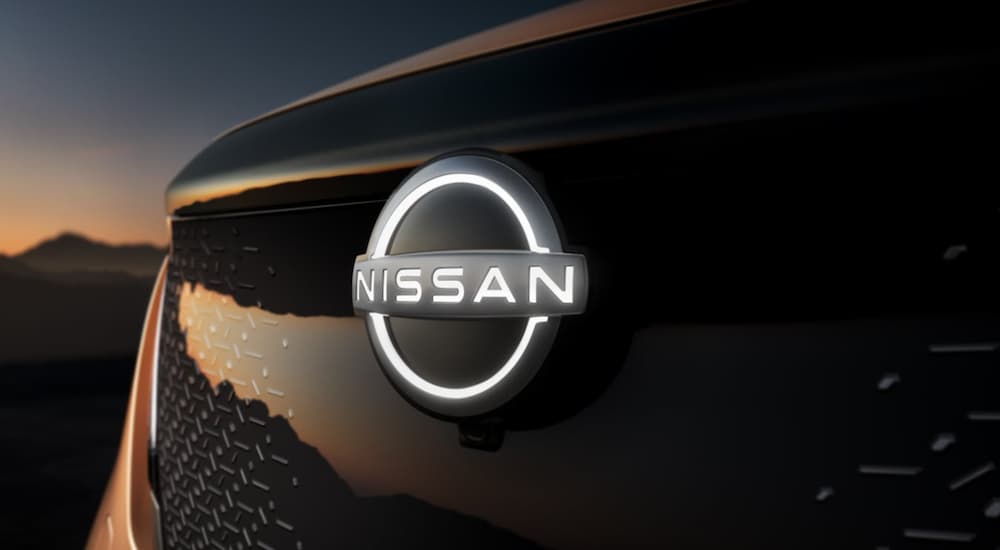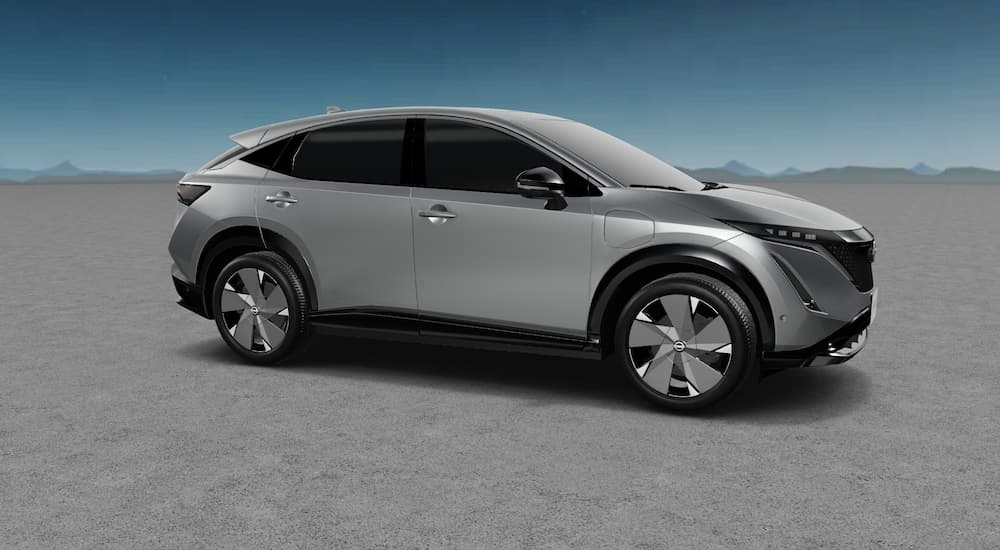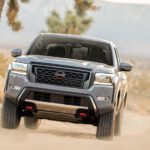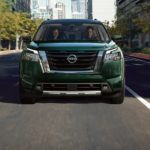Electric vehicles have continued to evolve as auto manufacturers fully embrace the trend. While the first generation of hybrid and electric vehicles captured the public’s attention with their unsurpassed efficiency, consumers now expect a little more from the segment, and the 2022 Nissan Ariya will more than meet those expectations. In recent years brands have stepped up to deliver high-performance EVs that hit the sweet spot between efficiency, power, and luxury, but those offerings still tend to be priced higher than most buyers are willing to go.
As we continue to see the steady growth of the EV market, drivers are understandably curious: is an affordable EV that’s actually stylish and fun to drive too much to ask? The 2022 Nissan Ariya aims to answer that question. Featuring innovative, sports car-inspired dual-motor all-wheel drive, premium, futuristic styling, and some of the industry’s most advanced driver-assist technology, the Ariya represents a new breed of affordable EVs that no longer ask drivers to make sacrifices in the name of efficiency.
An e-4ORCE of Nature
One of the most exciting aspects of the 2022 Ariya is the inclusion of Nissan’s e-4ORCE dual-motor all-wheel drive system. An optional upgrade from the Ariya’s standard 215 horsepower, single motor system, the all-wheel drive dual motor model boasts 389 horses as well as 443 pound-feet of torque. Informed by Nissan’s work on ultra-high-performance sports cars like the GT-R, the manufacturer has leveraged that knowledge into an entirely new approach to four-wheel drive and electronic chassis control. The unique configuration allows the Ariya to deliver a level of performance rarely seen at this price point and is not only faster than single-motor configurations but also allows for increased acceleration, traction, and comfort.
EVs hold a number of advantages over their gas-powered counterparts when it comes to performance, but it’s what exactly is accomplished with that power that sets the 2022 Ariya apart from the crowd. The primary advantage of the electric motor – aside from the fact it’s not reliant on gas – is its ability to generate power almost immediately. Traditional combustion engines depend on hundreds of parts working together to create, capture and distribute the power from a series of tiny explosions, while the magnet-driven electric motors kick into action the moment they’re fed electricity. This means there’s almost no delay between when you depress the pedal and when you start to feel the results, giving drivers a uniquely responsive and peppy ride.
But while this type of instant power seems all well and good, it can actually create some problems of its own. All that torque needs somewhere to go, and EVs, in particular, rely on control software to ensure it’s fed through the chassis in a measured way that won’t overwhelm the powertrain or melt your tires into a glossy black puddle. Nissan’s e-4ORCE system circumvents this common problem with a simple solution: double the number of tires being fed power, and you won’t have to waste the motor’s true potential. By integrating an all-wheel drive system into the crossover SUV, the Ariya is able to make the most of its powerful electric motors and deliver a ride unsurpassed by its two-wheel drive brethren.
Power and acceleration aren’t the only advantages to the dual-motor configuration. By dividing acceleration and braking between the front and rear wheels, Nissan engineers were able to reduce the motion-sickness-inducing lurching – technically called pitch and dive – that is so common to stop-and-go driving.
“Elements of e-4ORCE’s control technology were developed from data gathered from our sports cars, so you could say it is born from performance. In fact, much of the technology in the Ariya makes sense in a sports car. However, this technology isn’t there to give the Ariya sports-car-like qualities; it’s there to provide everyone inside a flat, stable ride that minimizes pitch and dive,” says Nissan Development Chief Product Specialist Makoto Fukuda.
Typically when a vehicle decelerates, it causes the front of the vehicle to dip slightly and push passengers forward. By compensating for the front brakes with rear regenerative motor braking, the Ariya is able to even out that sudden downward force and reduce the amount of jostling in the cabin. This feature also kicks in when accelerating on loose, bumpy roads, compensating for the uneven nature of the surface by subtly adjusting the motor control to each wheel. The result is a crossover that’s powerful without being uncomfortably so, harnessing that raw torque into a form that won’t overwhelm your everyday driving.
The Next Evolution of Automated Driving
The Ariya’s interior is nothing if not futuristic. With a minimalist design complete with expansive display screens, zero-gravity seats, and recessed haptic controls, the cabin has an airy, uncluttered feel without skimping on any of the features one might expect. The SUV is also one of the first Nissan products in the U.S. to feature the newest iteration of the brand’s ProPILOT driver-assist system – a significant step up from many competitor’s automated systems that some say might be the industry’s new standard-bearer.
Dubbed ProPILOT 2.0, the technology is a refinement of the original ProPILOT system, which debuted in 2017. While the 2.0 version has been offered on the Japanese-market Nissan Skyline (sold in the US without ProPILOT 2.0 as the INFINITI Q50) since 2019, the Ariya is the first car offered in the US to include the innovative control scheme.
ProPILOT works like many existing driver-assist suites, keeping the car centered on the highway and maintaining a steady distance from surrounding vehicles. With ProPILOT 2.0, Nissan takes it a step further, enabling ramp-to-ramp highway driving on divided roadways that have been mapped in high-definition. These differences might sound subtle but actually represent a significant leap in automation technology. Almost every vehicle on the road today features some sort of Level 1 driving automation, a category that includes technologies like cruise control. Systems such as the original ProPILOT represent Level 2 automated driving, performing both steering and acceleration but requiring constant monitoring by the driver.
With ProPILOT 2.0, Nissan is edging into the territory of Level 3 automation. Known as conditional automation, these systems can detect environmental factors and perform most driving tasks but still allow for human input and override. This level of automation is possible thanks to a wide array of sensors – seven cameras, twelve sonars, and five radars – that work together to give the ProPILOT 2.0 system all the information it needs to navigate traffic safely. Simply set a destination, get on the highway, and the system will let you know when it’s available, kicking into gear to take over nearly all driving duties.
There are a number of failsafes built-in to the ProPILOT 2.0 system; while it can be operated hands-free, it uses an in-cabin camera to ensure the driver keeps their eyes on the road at all times (it is this driver monitoring system that keeps it from officially being Level 3). The system cannot be used in tunnels, complex interchanges, or tight turns and will automatically deactivate when faced with inclement weather or a high windshield wiper speed. Despite these limitations, Pro Pilot is still among the most advanced driver-assist technologies currently on the market and easily the best value for the price.
Seamless Styling
Manufacturers are forever rolling out new apps, gauges, and gizmos for their infotainment systems but often pay little attention to the interface through which you actually interact with them. In a refreshing twist, the 2022 Ariya features both a 12.3-inch instrument panel and a 12.3-inch infotainment screen, immediately separating this crossover from the pack and signaling a tech-heavy interior that includes a number of premium features such as wood trim and ambient lighting.
Recently there’s been a bit of a backlash against touch-based control schemes, with some consumers expressing their desire for traditional buttons and knobs, but Nissan has turned to haptics to provide the best of both worlds. While the word might not be familiar, you’ve almost undoubtedly interacted with haptic controls before: just think of that subtle “click” feeling of an iPhone home button.
Embedded on a simulated wood-grain panel along the Ariya’s dash, these haptic controls give drivers and passengers the sort of real-time tactile feedback that makes analog controls so appealing and natural. With a satisfying clicking feeling and sound, it recreates the sense of touch with icons that disappear when not in use, giving the dash a sleek, uncluttered appeal. “We created a clean space by blending the haptic controls with the grain of the interior’s wood grain finish. We did this in a way that didn’t affect the performance of the controls, allowing us to achieve both functionality and an attractive appearance,” says Hideki Tago, a senior designer at Nissan.
The Next Step for Nissan
The Ariya represents an exciting new step for Nissan and the auto industry as a whole. Showcasing the unparalleled power of Nissan’s e-4ORCE dual-motor all-wheel drive system, the SUV proves that the days of having to choose between performance and efficiency are rapidly coming to an end. ProPILOT 2.0 represents a giant step in bringing advanced driver assist technology to the mass market, giving drivers a seductive look into just what the future of driving might look like.
The attention to detail is obvious in the Ariya’s sophisticated styling, matching the futuristic tone set by ProPILOT 2.0 and delivering a unique cabin that reminds us of the bold, edgy designs usually seen on concept cars but never released to the public. Just one of these features would be enough to get us excited about the 2022 Nissan Ariya, but put them all together, and you’ve got an SUV that we can’t wait to take out for a test drive.

